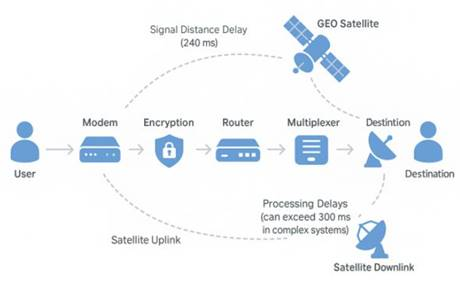✌️ You Think You’re Fast? Let’s Talk Instant Throughput
- Chloé Durand
- Aug 5
- 3 min read

Measuring tools often focus on maximum throughput, without reflecting actual traffic variations. Yet it is the instantaneous throughput that determines the perceived quality of each second.
In this article, we will clearly distinguish between the different notions of throughput, explain how tools carry out their tests, and why their results can sometimes be misleading. Because measuring throughput is good - understanding what you're measuring is even better.
A reminder of the basics> What is throughput?
Broadband speeds are a hot topic right now, with providers and operators vying with each other to attract business and consumer customers. It's also a fundamental element in the emergence of new technologies and therefore markets, whether it's mobile with 5G vs. 4G, or satellite with the arrival of LEO constellations.
1. Bandwidth
First of all, bandwidth is the theoretical maximum capacity
This is the maximum possible throughput on a link, in the absence of any constraints.
It is determined by:
the type of medium (fiber, copper, 4G...)
the network equipment
the contractual configuration (e.g.: 1 Gbit/s on a box)
2. Maximum Throughput
maximum throughput - what the test actually achieved
This is the best throughput measured during a test (e.g. iPerf3).
It depends on:
available bandwidth
network congestion
endpoint hardware
errors, losses, protocols, etc.
3. Instantaneous Throughput
What's actually happening at any given moment. This is the true indicator for measuring the quality of the user experience (QoE), since we are measuring the real quality perceived simultaneously with the application data exchanged, as opposed to the maximum throughput which “fills up” the pipe, preventing full use of the network.

So, to summarize:
Bandwidth = theoretical ceiling,
Maximum throughput = best measured result,
Instantaneous throughput =what actually passes through at a given time.
LIFBE , what is it and where does it come from?
Following the expectations of telecom market players and faced with solutions that failed to meet the need for instantaneous throughput, in 2016 Orange Innovation filed a European patent # EP2 862 324B1 called “Low Impact Fast Best Estimation”.
With the collaboration of Orange Innovation, LATENCETECH has enhanced its active probe (QoS Agent) for measuring instantaneous throughput to take account of this protocol in addition, developed in object-oriented ADA language for the defense sect
Can you tell us more about how LIFBE works?
LIFBE produces an estimate of the bandwidth on a network by looking for the limitations of the limiting network equipment (called "bottleneck" in the following).

During a measurement session, LIFBE will send an increasingly intense stream of packets, with the aim of temporarily congesting the bottleneck and forcing it to "cache" some of the packets.
By analyzing all the packets in a session, LIFBE will determine which packets are "cached", providing an estimate of the bottleneck's limit.
This way of measuring bandwidth takes into account the existing traffic at the Bottleneck and produces an averaged result representing instantaneous throughput.
LIFBE: what makes it different from other solutions?
LIFBE measures instantaneous throughput while other solutions measure maximum throughput,
The unit accuracy is milliseconds,
The packet size used for measurement is reduced to 1380 bytes (MTU),
The impact on real traffic is minimized by sending smaller packets, which are stopped as soon as the bottleneck throughput is reached, see above,
A prediction module included in the Analyzer dashboard can predict the value of upload or download throughputs.
LIFBE: a good use case to share?
There are plenty of them. Take the satellite sector, for example. While in our wired and even cellular network worlds, the quantity of bytes is of little importance, in the satellite sector, the byte remains a rare commodity, often subject to usage quotas.
Thus, LIFBE's fundamental interest lies in its ability to provide instantaneous flow measurements on a very regular basis - an essential element for the user - without consuming unnecessary capacity, unlike other methods. One measurement consumes around 4MB, whereas iPerf3 requires around 200MB.


Marc Soulacroup





Comments